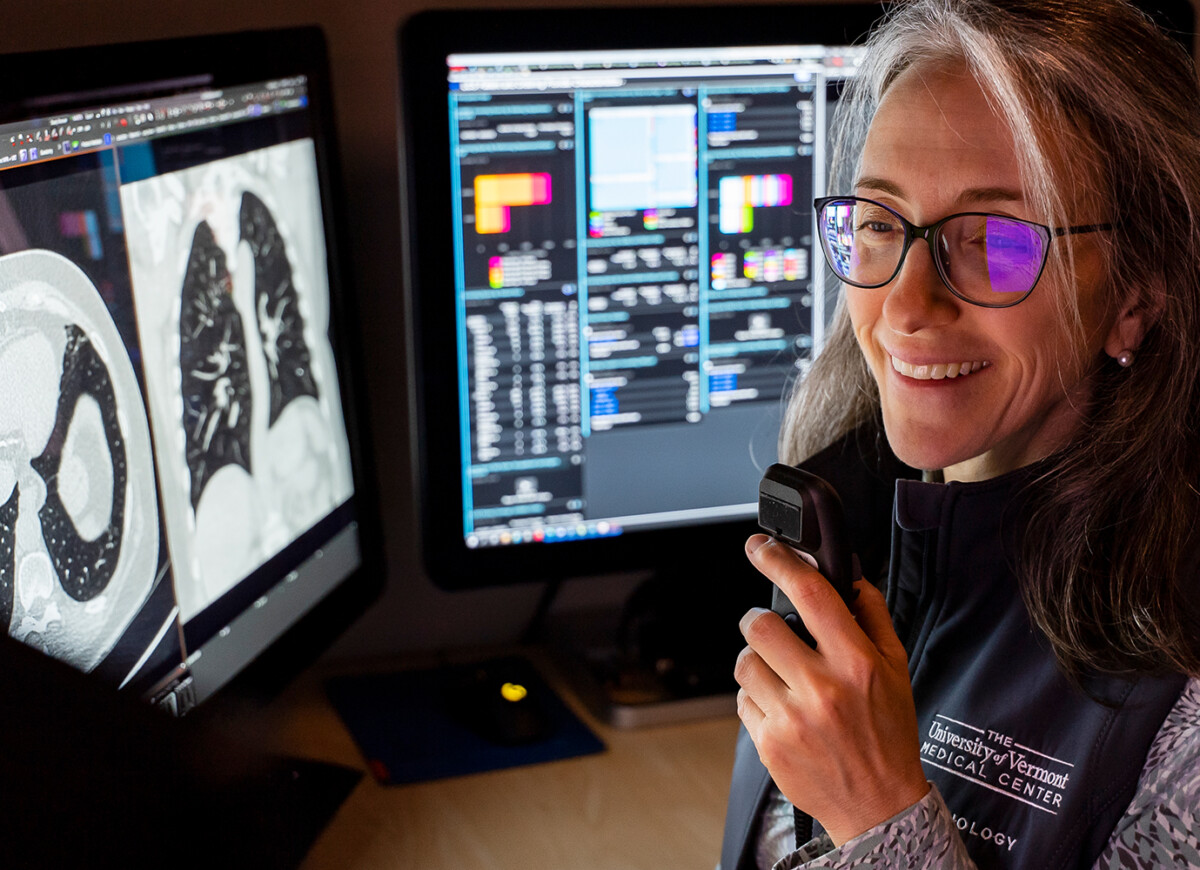Who Gets Screened for Lung Cancer? More Patients Now.

When Beth Zigmund, MD, stepped into her current role as Director of Lung Cancer Screening at The University of Vermont Medical Center about a year ago, she already knew what one of her top priorities would be: Enhancing the hospital’s efforts to identify and treat cases of lung cancer as early and effectively as possible.
Lung cancer — the third most common cancer in the United States, and the leading cause of cancer-related death among both men and women — has long vexed physicians and public health advocates focused on reducing mortality rates and health care costs. Lung cancer screening is available to people ages 50 and older who have smoked the equivalent of a pack of cigarettes per day for 20 or more years. Former smokers are eligible if they meet these criteria and have quit within the last 15 years. Evidence supporting the positive impact of annual lung cancer screening for people who fall into these categories is very strong – similar to the quality of data supporting mammography screening – but, according to Dr. Zigmund, “for a variety of reasons, patients just don’t get screened.”
In fact, nationwide, screening rates for lung cancer are very low, according to a recent study led by the American Cancer Society (ACS). The ACS-led review found that out of 8.5 million eligible adults between the ages of 55 and 80, roughly 560,000 are screened each year – that’s fewer than 1 in 15 eligible people. (The COVID-19 pandemic did not reduce nationwide lung cancer screening rates, the study found, most likely due to how underutilized the service is in general.) Since this study was published, screening eligibility has been expanded to include patients aged 50 to 55, and participation is even lower among this new group.
At about 15 percent, Vermont’s lung cancer screening rate outstrips the national average, but there is room for significant improvement.
We’re still missing the vast majority of people who are eligible for screening.
Dr. Zigmund
Recently, she and the Vermont Lung Cancer Screening Task Force conducted a month-long outreach program focused on reaching people who are eligible for lung cancer screening but aren’t participating, offering webinars for both patients and providers — who refer patients to the screening programs — as well as advertisements and radio and television interviews with clinicians about the benefits of screening. The National Lung Cancer Screening Trial, which concluded in 2011, showed that eligible people who underwent low-dose CT lung cancer screening had 20 percent fewer deaths than those who did not.
But the majority of Dr. Zigmund’s recent work has centered on a different method for addressing the problem of low participation in lung cancer screening programs: Data.
Traditionally, lung cancer screening programs have relied on primary care providers to identify and refer patients who would benefit from annual screenings, based on the information patients share about their smoking history. With the recent launch of The University of Vermont Health Network’s new electronic health record, called Epic, across all its hospitals in Vermont and northern New York, Dr. Zigmund saw an opportunity to capture important health data that can help clinicians better identify patients who might be eligible for UVM Medical Center’s Lung Cancer Screening Program. Dr. Zigmund worked with a team of Epic analysts to build a system for collecting and displaying lung screening data in real-time.
Now, by collecting high-level demographic data (age, geography, risk factors), as well as a variety of other information, clinicians like Dr. Zigmund can better identify patients who may be eligible for screening. “Better health data means we have the opportunity to reach more people, improve the rate of early detection, and prevent a lot of unnecessary mortality for lung cancer,” says Dr. Zigmund.
Clinicians can also use the lung cancer screening data to track the screening program’s effectiveness by monitoring data on false positives and missed cancers on screening studies, as well as cancer patients who were not identified as at-risk or eligible for screening prior to their diagnosis.
Data collection is underway at both UVM Medical Center and UVM Health Network – Central Vermont Medical Center, and Dr. Zigmund plans to expand the program to patients and communities across all of UVM Health Network’s service area in Vermont and Northern New York. Better information collection and better tracking of clinical outcomes could be a game-changer in our work to improve the health of our communities, she says.
Detecting lung cancer early dramatically improves survival rates. The work we are doing within the Epic electronic health record gives us more tools than ever before to identify people who could benefit from this screening program. And we’re still working to improve it.
Dr. Zigmund
